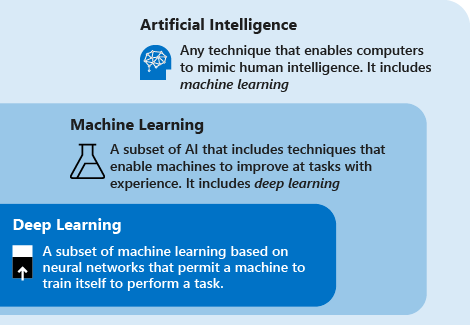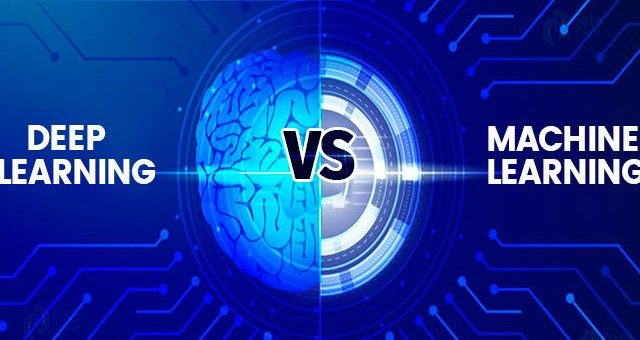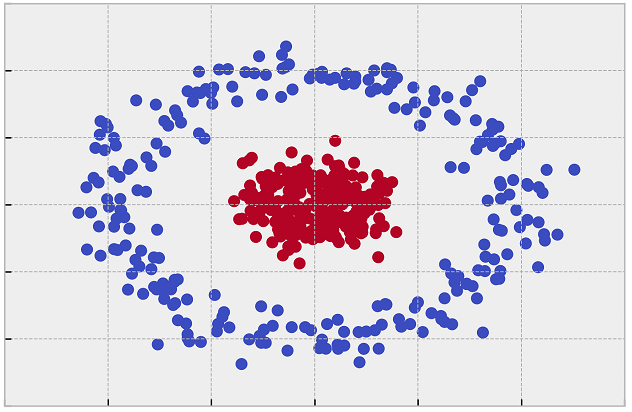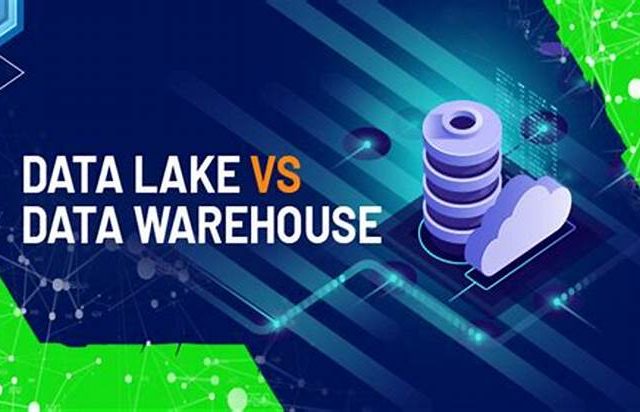This post provides a guide about Deep Learning vs. Machine Learning. This advanced technologies is widely expected to revolutionize businesses across industries. The terms machine learning, and deep learning are often used mutually and interchangeably. This is a post to understand the differences between these terms and to help you understand machine intelligence.
Machine Learning
Machine learning (ML) refers to the study of computer models that learn and adapt automatically from experience.
Machine learning model is an algorithm which learns and adjusts itself based on the data that it processes. It’s a computer technique a machine gets more information and becomes smarter based on the data it gets. The computer can then adjust how it performs and operates based on what it’s learned.
Machine learning can help easily identify trends and patterns, and can result in overall better experiences for everyone as the machine learns and adapts to enhance an organization.
There are some disadvantages. Machine learning takes time, and has chance for errors, so programmers have to be diligent with their technique to keep errors to a minimum. However, these MLs are a great option for organizations as they work to incorporate data and improve technology every day.
Examples of Machine Learning
- Smart home assistants are great examples of machine learning. When you tell your smart home assistant about your routine, that routine is remembered and implemented for the future.
- Your social networks learn about your preferences and serve you more of the content you want. Similarly, you are served ads based on the data your social media services learn about you.
- Your favorite music provider like Spotify learns about the kind of music you like, and suggests new things that you might enjoy listening to as a result.
Deep Learning
When machine learning algorithms generally need human correction when they get something wrong, deep learning algorithms can improve their outcomes through repetition, without human intervention. Therefore, think of deep learning as the evolution of machine learning, but it’s far more advanced and capable of self-correction
Deep learning is a technique that layers algorithms and computing units or neurons into what is called an neural network or deep neural networks. These neural networks take inspiration from the structure of the human brain. Data passes through this web of interconnected algorithms in a non-linear fashion, much like how our brains process information.
The main difference these two kinds of learning, the need for computing intervention and the kinds of algorithms used. Deep learning doesn’t require human intervention, while machine learning may interpret data incorrectly and need fixing.
Deep Neural Networks
Deep neural networks (DNN) are part of what’s known as neural networks that are an important technique for how machines are able to store data. The term “deep” is referring to the number of hidden layers in a neural network. Normal neural networks have two or three hidden layers, while deep neural networks have more than 100.
Deep neural networks use the large sets of labeled data and neural network architectures, so they can learn directly from the data, instead of needing a manual extraction.
These deep neural networks allow for a lot more space for data to live, and the program can continue to learn with all the deeply hidden data its storing. If the neural networks detects that something is wrong, or it’s assuming incorrectly, it’s able to call on the deep neural networks to correct. The depth of the neural network will vary based on the kind of computer being used.
Examples of Deep Learning
- Prediction is an important element of translation services and is possible thanks to neural networks. Many language translation services rely on deep learning to help them translate quickly and accurately. Deep learning element allows the program to look into the neural networks to find the right translation.
- Adding color to black and white images is another example of deep learning. Neural networks can recognize and learn about the colors and do it much faster.
- Autonomous vehicles rely on deep learning to work. They need to learn about traffic signs, pedestrians, and other vehicles. All of these is needed to keep autonomous vehicles safe.
Key Differences

- Machine Learning
- A subset of artificial intelligence.
- Requires features to be accurately identified and created by users.
- Requires human intervention to correct.
- Divides the learning process into smaller steps, then combines the results from each step into one output.
- Can train on small data sets to make predictions.
- Shorter training and lower accuracy.
- Makes linear correlations.
- The output is usually a numerical value, like a score or classification label.
- Can train on a CPU, and work on low-end computers.
- Deep Learning
- A subset of machine learning.
- Learns high-level features from data set and can creates new features by itself.
- Learns on its own past mistakes.
- Moves through the learning process by resolving the problem on an end-to-end basis.
- Requires larger amounts of data sets to make predictions.
- Long training and high accuracy.
- Makes non-linear, and complex correlations.
- The output can have multiple formats, like a text or a sound.
- Depends on high-end computers. It can train better on a GPU.
Recommended for you:
Deep Learning
LSTM Neural Network




MOST COMMENTED
Tutorial
Important Methods in Matplotlib
Machine Learning
Bias and Variance Tradeoff Machine Learning
Tutorial
Multiclass and Multilabel Classification
Machine Learning
Reinforcement Learning in Machine Learning
Deep Learning
Alexnet Architecture Code
Machine Learning
Machine Learning Models Explained